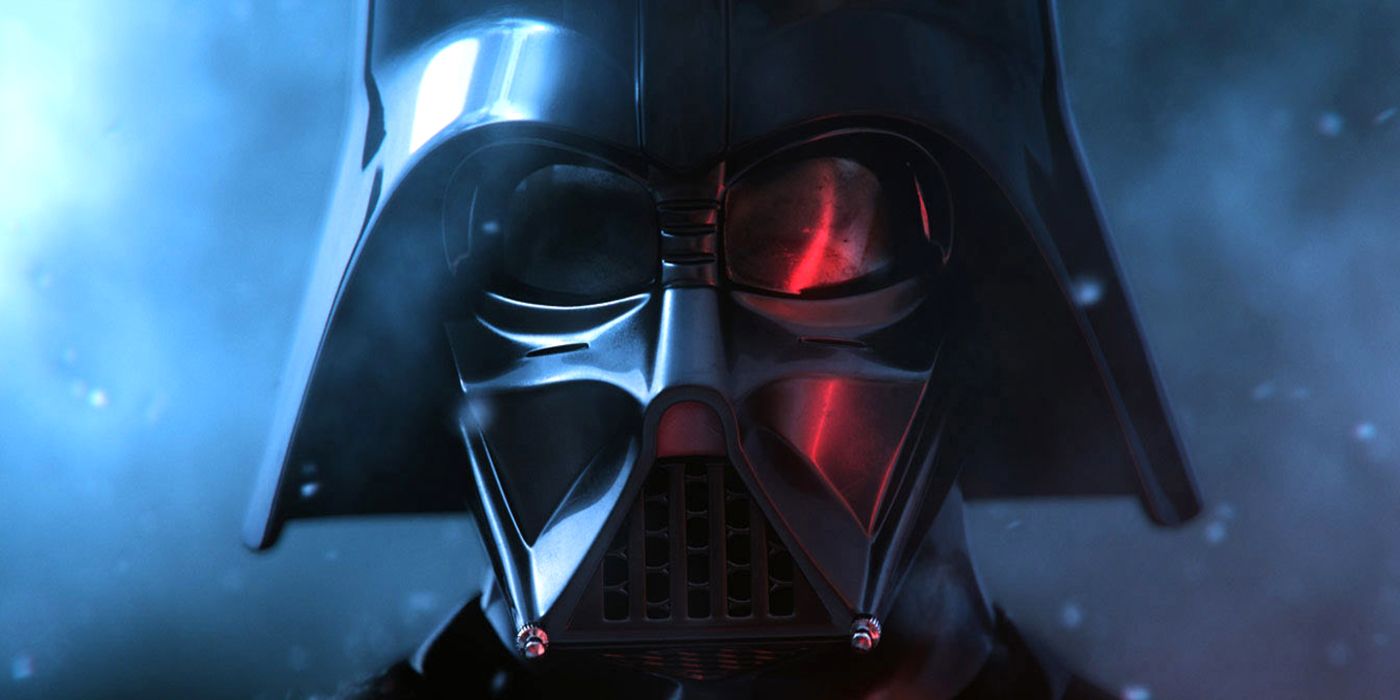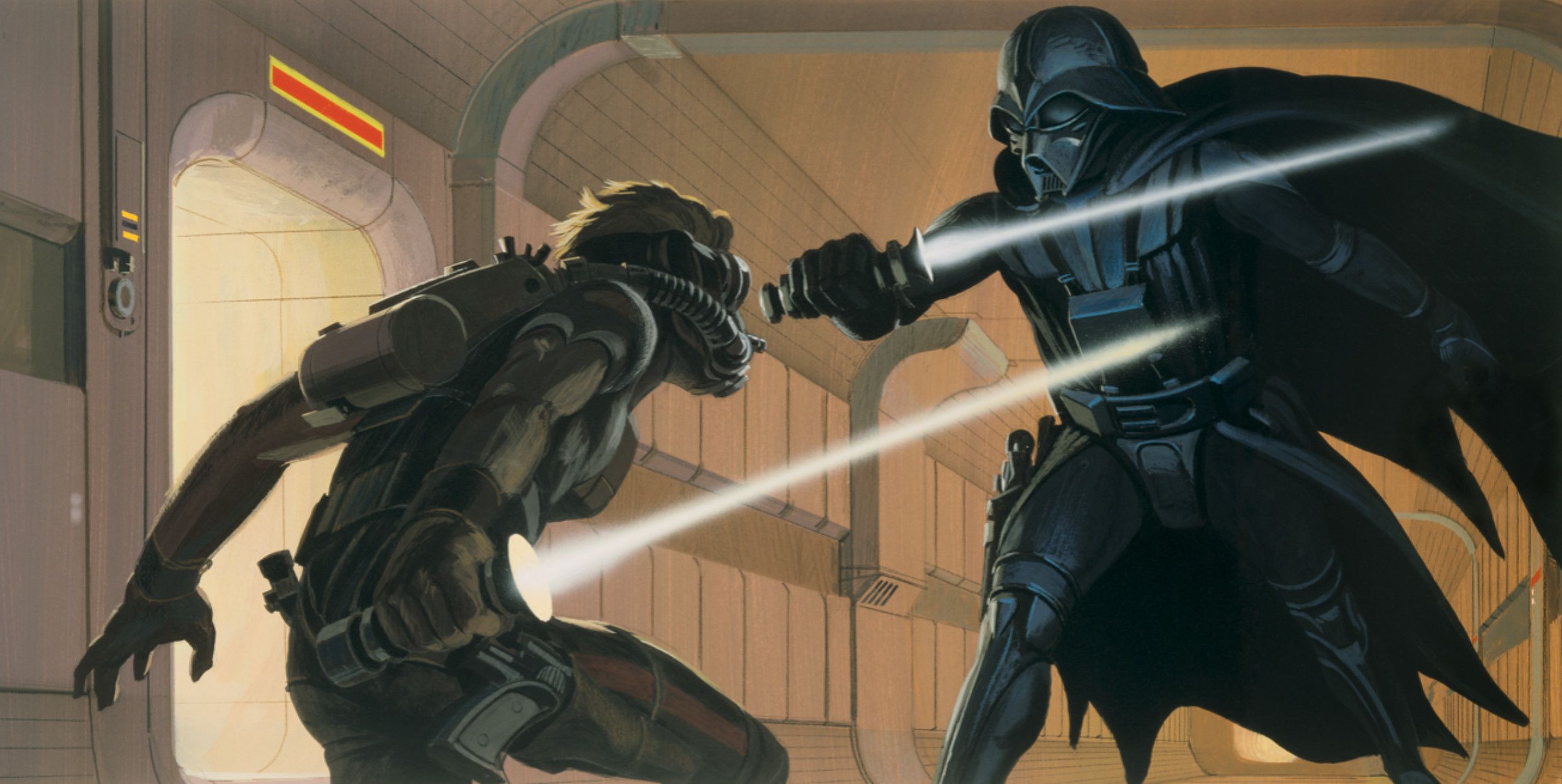Every movie fan knows the story of Star Wars was just as dramatic and world-changing behind the camera as it was in front, as George Lucas and his start-up crew defied the odds, turning in a hit--while also changing the way movies were made from there on out. Equal parts inspiration and flat-out luck, new-behind-the-scenes details from one of the people who shaped that design reveal a new wrinkle to the origins of Darth Vader.
The new insights come directly from Lair: Radical Homes and Hideouts of Movie Villains by Chad Oppenheim and Andrea Gollin, a new book taking a closer look at some of cinema's most iconic 'evil headquarters' (from a more architectural/engineering perspective). Asking the question, "why do bad guys live in good houses?" the book includes interviews with a variety of Hollywood production designers, artists, and others. Amidst the glimpses into classic designs, Lair also includes a talk with Star Wars Set Decorator Roger Christian, offering new details on the making of the George Lucas long-shot made on an impossible budget. And how that shrewd need to take inspiration wherever it appeared shaped the masked villain who would go on to become a pop culture icon.
The book itself will be available on November 5th, but we're able to give fans of cinematic architecture and set design a small preview, including the interview with Roger Christian-- the self-described "third person hired on Star Wars"--describing how the look of the movie and its villain took shape. Including how a slim budget (and stroke of luck) led him to see a unique look for Vader in a suit of centuries-old samurai armor:
When we got to London and I read the script, I thought, "My God, how are we going to do this?!"... All we had to go on were six sketches from Ralph McQuarrie. We built a landspeeder out of plywood. Anything we could find from the garage, really. We literally had no money. The pressure on the art department was horrendous. I had to create the Millennium falcon out of scrap. The lightsabers and weapons, I had to take old weapons and stick bits on them. I bought tons of junk, truckloads.
The thing with science fiction is you don't have anything to reference. When you're doing a period film you can say, "Oh, it's the 1840s," and you know the right clothes and furniture. With Star Wars, there was nothing. Only George's descriptions in the script as this kind of evil world. Quite simple. But Ralph McQuarrie's original paintings included a Death Star corridor and a beautiful sketch of Darth Vader with a lightsaber, fighting. Those gave us the key to it... The Empire were the cold people--sterile and dark. I remember going to the place where I used to get guns for films. There was a two-hundred-year-old samurai uniform. A black one. And the helmet. I brought it in. It had a lacquered look, which was exactly what we based Vader's helmet on. There was a lot of luck on this film.
Those interested in the full interview with Christian, as well as detailed architectural looks at the Death Star and other iconic villain hangouts, can pre-order Lair: Radical Homes and Hideouts of Movie Villains now, or look for it at your local comic shop and bookstore on November 5th, 2019.
From Atlantis in The Spy Who Loved Me to Nathan Bateman's ultra-modern abode in Ex Machina, big-screen villains often live in architectural splendor. From a design standpoint, the villain’s lair, as popularized in many of our favorite movies, is a stunning, sophisticated, envy-inducing expression of the warped drives and desires of its occupant. Lair: Radical Homes and Hideouts of Movie Villains, celebrates and considers several iconic villains’ lairs from recent film history.


